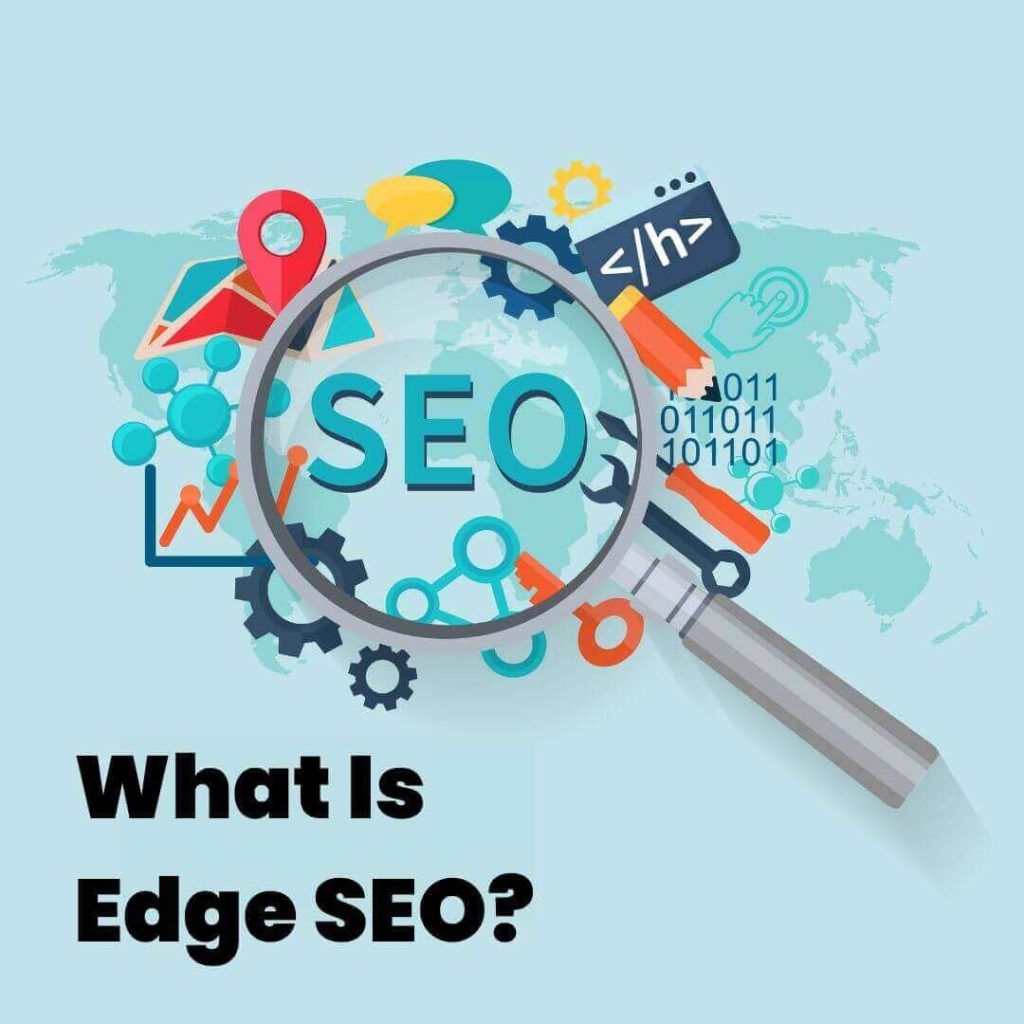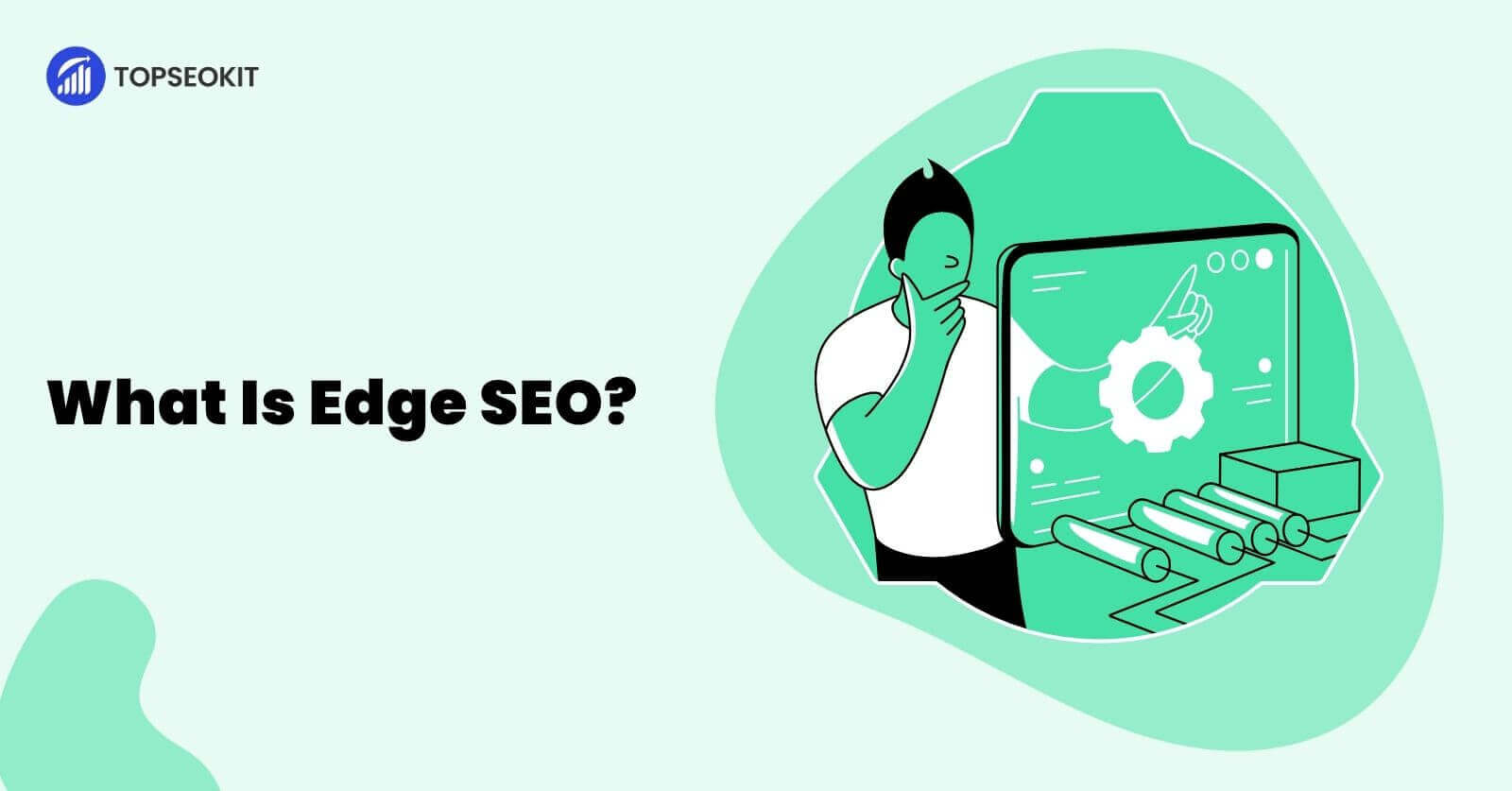In the world of digital marketing, search engine optimization is crucial to driving traffic and increasing visibility online. However, with the rise of edge computing, a new approach to SEO has emerged: edge SEO. In this article, we’ll explore what it is, how it works, and why you should adopt it for your website.
What Is Edge SEO?

To understand edge SEO, it’s important to first define edge computing. Edge computing refers to the practice of processing data closer to the source of the data, rather than relying on centralized data centers. This approach can lead to faster processing times and reduced latency, as well as improved resilience and security.
Edge SEO, is the practice of optimizing your website for SERP using computing technologies. It involves distributing your content and caching it closer to your users, rather than relying on centralized servers.
Defining Edge Computing
At its core, edge computing is about moving computation closer to the source of the data. This can involve deploying servers and other computing resources closer to the edge of the network, such as at the base of cell towers or in Internet of Things (IoT) devices.
The goal of edge computing is to reduce latency and improve performance by processing data as close to the source as possible. This can be particularly important for applications that require real-time processing, such as video streaming or autonomous vehicles.
Edge SEO vs Traditional SEO
In traditional SEO, the goal is to optimize your website for search engines by ensuring that your content is relevant and accessible to users. This typically involves using keywords, optimizing your site structure, and building high-quality backlinks.
Edge SEO, on the other hand, involves distributing your content and caching it closer to your users, in order to reduce latency and improve performance. This can be particularly important for mobile users, who may be accessing your site from a variety of locations and on a variety of devices.
How Does Edge SEO Work?

It works by using edge computing technology to optimize website content delivery and improve website performance. Here are the basic steps involved in how edge SEO works:
Content is served from an edge server:
Rather than serving content from a central server, edge SEO serves content from a server that is geographically closer to the user. This reduces latency and ensures that content is delivered more quickly.
Content is cached on the edge server:
Edge servers also cache website content, which means that frequently accessed content is stored on the server and can be delivered to users more quickly. This reduces the number of round trips between the user and the central server, which can improve website performance.
Edge servers optimize content delivery:
Edge servers can optimize content delivery by compressing files, minifying code, and using other techniques to reduce the size of website content. This can reduce load times and improve website performance.
Website performance is monitored and optimized:
Edge SEO providers monitor website performance in real time and optimize content delivery based on user behavior and other factors. This can help to ensure that website performance is consistently optimized.
How to Implement Edge SEO
Let’s take a look at how to implement it on your website. Here are some key steps to follow:
Choose an edge computing provider:
The first step in implementing edge SEO is to choose an edge computing provider. There are a number of providers on the market, including Cloudflare, Akamai, and Fastly. Each provider offers different features and capabilities, so it’s important to choose one that meets your specific needs.
Configure your DNS:
Once you’ve chosen an edge computing provider, you’ll need to configure your DNS settings to point to the provider’s servers. This will allow your website’s traffic to be routed through the provider’s network of edge servers.
Configure your caching settings:
Next, you’ll need to configure your caching settings to ensure that your content is cached and distributed effectively. This may involve setting up rules for how long content should be cached, which content should be cached, and where it should be cached.
Optimize your content:
In order to get the most out of edge SEO, it’s important to optimize your content for distribution on edge servers. This may involve optimizing images, reducing file sizes, and minimizing the use of external scripts and resources.
Monitor and adjust:
Finally, it’s important to monitor your website’s performance and adjust your edge SEO settings as needed. This may involve tweaking caching settings, optimizing content, and making other adjustments to ensure that your website is performing as well as possible.
Benefits of Edge SEO
Here are some benefits:
Improved Page Load Times
One of the primary benefits is improved page load times. By caching your content closer to your users and delivering it via a distributed network of servers, you can reduce latency and improve performance.
This can be particularly important for mobile users, who may be accessing your site from a variety of locations and on a variety of devices. By reducing page load times, you can improve the user experience and increase engagement on your site.
Increased Resilience
By distributing your content across a network of servers, you can ensure that your website remains available to users, even if one or more servers go down.
This can be particularly important for businesses that rely on their website for revenue. By ensuring that your website is always available to users, you can avoid lost sales and revenue due to downtime.
Enhanced Security
It can enhance the security of your website. By caching your content closer to your users, you can reduce the risk of attacks that target centralized servers.
In addition, by using a distributed network of servers to deliver your content, you can reduce the risk of DDoS attacks, as there is no single point of failure. This can help to ensure the availability and security of your website.
Improved website performance:
Edge SEO can also help to optimize website performance by minimizing the number of round trips between the user’s device and the server. This can lead to faster content delivery and reduced network congestion, which can result in a better user experience and improved search engine rankings.
Better search engine rankings:
It can help to improve search engine rankings by providing faster load times, which is a key factor in search engine algorithms. By improving website performance, edge SEO can also increase the likelihood that users will engage with the website, which can boost search engine rankings.
Increased scalability:
Edge computing technology can help to improve the scalability of a website by distributing content across multiple edge servers. This can help to reduce the load on individual servers and ensure that the website can handle increased traffic without sacrificing performance.
Conclusion
In conclusion, edge SEO is a powerful strategy that can help website owners improve their website’s performance and increase their visibility in search engine results pages. By utilizing edge computing technology and distributed content delivery networks, businesses can provide a faster, more reliable, and more secure user experience to their audience. As the internet continues to evolve and user expectations continue to grow, it’s important for businesses to stay up-to-date with the latest trends and technologies, and edge SEO is certainly one strategy worth considering.
FAQs
What is the difference between traditional SEO and edge SEO?
Traditional SEO focuses on optimizing website content and structure to rank higher in search engine results pages. Edge SEO, on the other hand, utilizes edge computing technology and distributed content delivery networks to improve website performance and speed.
How can I tell if my website would benefit from edge SEO?
If your website experiences slow load times or has a high bounce rate, it may benefit from implementing edge SEO. Additionally, if you have a large global audience, edge SEO can help improve website performance and user experience across different regions.
Can I implement edge SEO on my own or do I need to hire a professional?
While it is possible to implement edge SEO on your own, it is often recommended to work with a professional who has experience in utilizing edge computing technology and content delivery networks. This will ensure that your implementation is efficient and effective.
Will implementing edge SEO have an impact on my website’s search engine rankings?
While implementing edge SEO alone may not directly impact your website’s search engine rankings, it can indirectly improve your rankings by providing a better user experience, which can lead to increased engagement and backlinks.
Explore More:
Ethics in Social Media Marketing

Leave a Reply